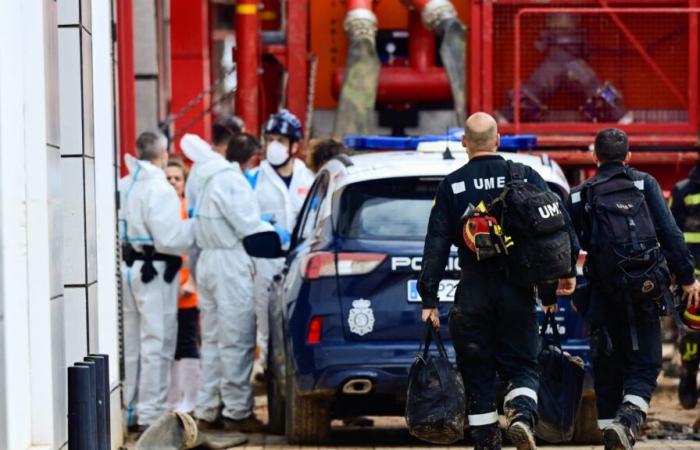If fingerprints are mainly used to identify victims of the floods in Spain, the state of the bodies, damaged by the water, complicates the task.
Six days after the terrible floods in Spain which left at least 217 dead, the priority remains locating the many people still missing. And the identification of the bodies, grouped together at the Valencia courthouse which has been transformed into a giant morgue. This identification is complicated by the deterioration of victims upon contact with water.
To identify a body, capturing fingerprints, the immutable traits of each individual, remains the preferred procedure. The director of Imelec, the Institute of Legal Medicine and Forensic Sciences of Catalonia (Imelec), explains to the Spanish media ABC that a “comparison” is made between “the fingerprint post mortem” and “the imprint before death” thanks to the database of national identity documents, “compulsory from the age of 14” in Spain.
“Difficulties using necro-fingerprint”
“The problem is that as the days go by, due to the state of the bodies in contact with water, there begin to be difficulties in using the necrofingerprint,” explains Eneko Barbería.
For his part, a forensic doctor at the Institute of Legal Medicine of Galicia, Fernando Serrulla, is more confident to the daily El Mundo. He estimates that the vast majority of corpses “should be able to be identified by fingerprint in a relatively short period of time”, with the tissues still being fairly well preserved after several days of immersion. But the longer the bodies remain in the water, the more complicated the procedure becomes.
There are then other solutions, such as dental identification or DNA identification. To perform forensic odontology, forensic pathologists can use the victim's dental records, including an x-ray for example, and make a comparison with the dentition of the corpse.
However, this identification process may be impossible in young children who do not yet have teeth or have never been to the dentist. Or even in people who “lost their oral prosthesis” in contact with water, Narcís Bardalet, a retired expert who helped identify bodies after the tsunami in Thailand in 2004, points out to ABC.
DNA identification requires more time and resources than other procedures. But automatically during an autopsy, biological samples are taken from the body in advance.
“A DNA sample can be taken from any remains or tissue, a profile that can be compared to an antemortem sample taken from a personal utensil, such as a toothbrush,” explains Eduardo Osuna, professor of forensic medicine. and forensic science at the University of Murcia, in El Mundo.
Experts point out that all information that may seem secondary also helps in research. Like a tattoo, a particular scar, an implant, a numbered medical prosthesis…
Numbered bodies
To carry out the identification of the bodies, a strict process is followed, governed by Royal Decree 32/2009. This decree provides for coordination between forensic doctors, scientific police and the Integrated Data Center, responsible for collecting data on missing persons.
Once a body is found, a forensic team made up of forensic doctors from all over Spain and the scientific police goes to the scene of the death to correctly label the body. Indeed, to help with identification and traceability, “each municipality concerned is assigned a number, and the body is located in an area, also numbered,” explains the director of Imelec, Eneko Barbería. The forensic team then returns to the Valencia Courthouse where the bodies are grouped together to take the necessary samples.
“All forensic experts are aware of the importance of identifying the bodies of families and I know that great efforts are being made to achieve this,” says Eduardo Osuna, professor of forensic and forensic medicine at the University of Murcia.
“The professionals who carry out this work are specialized professionals, accredited and sufficiently trained so that the identifications are carried out with the risk required in these situations,” he adds.






